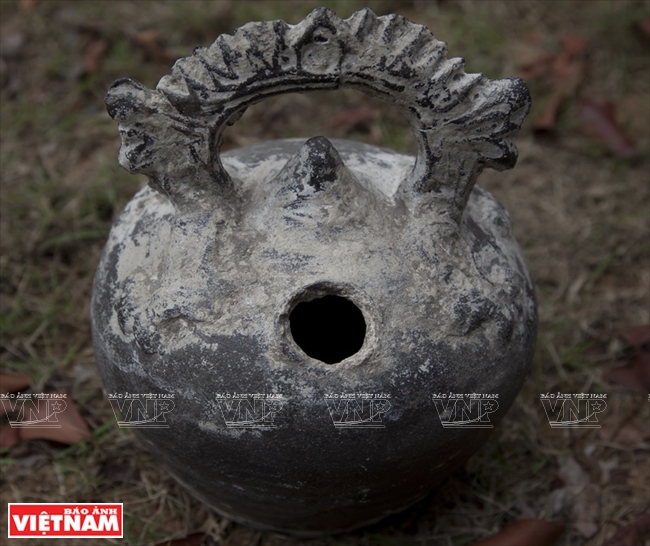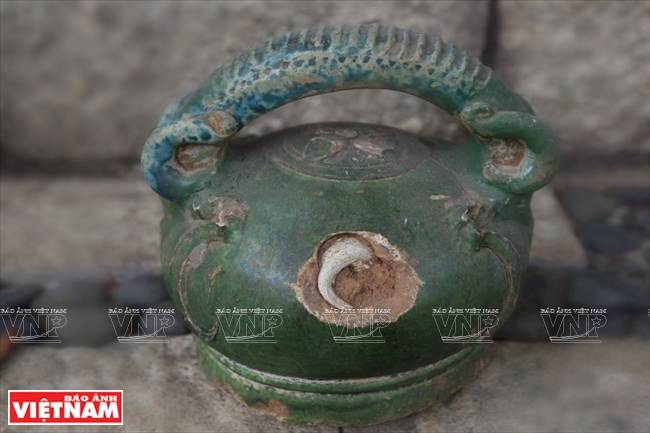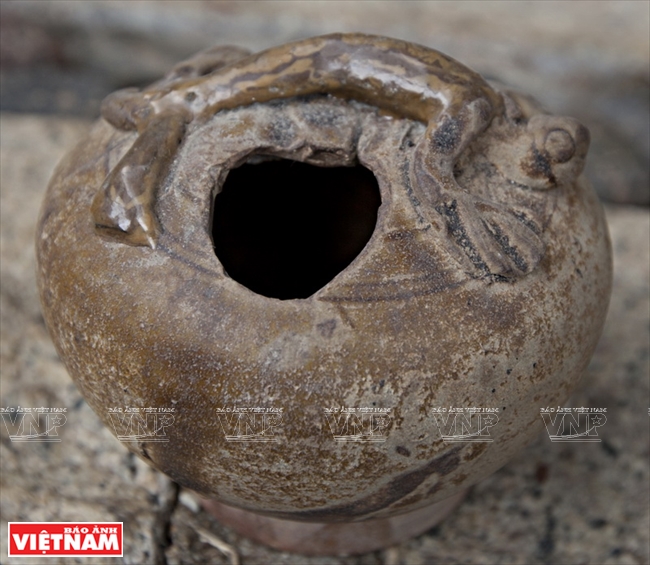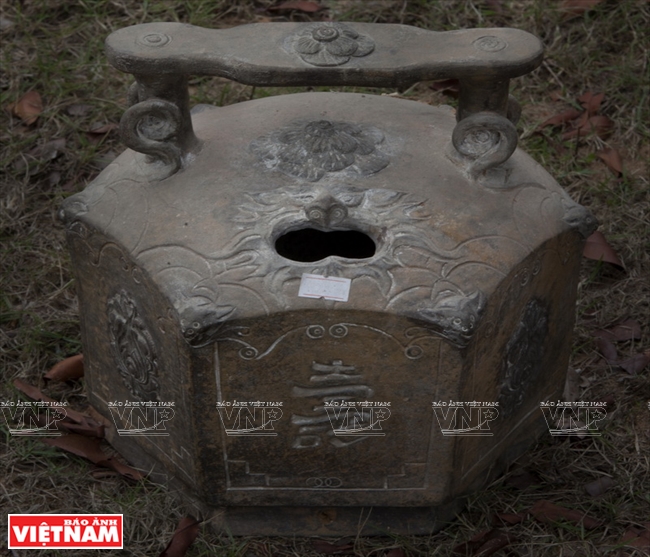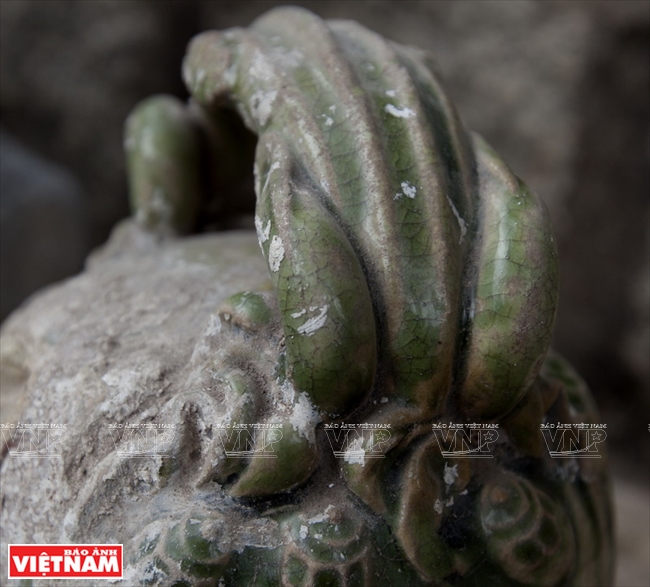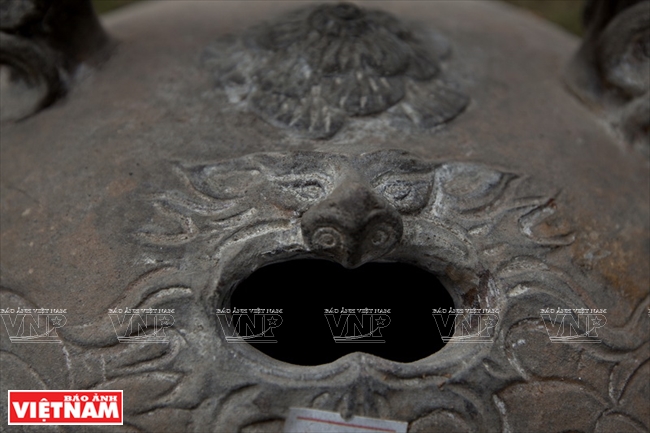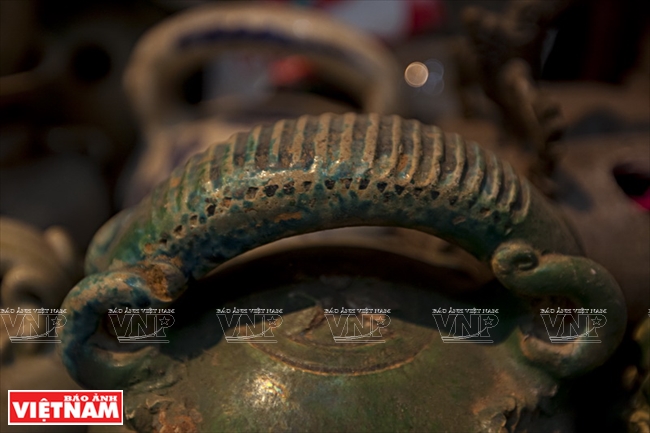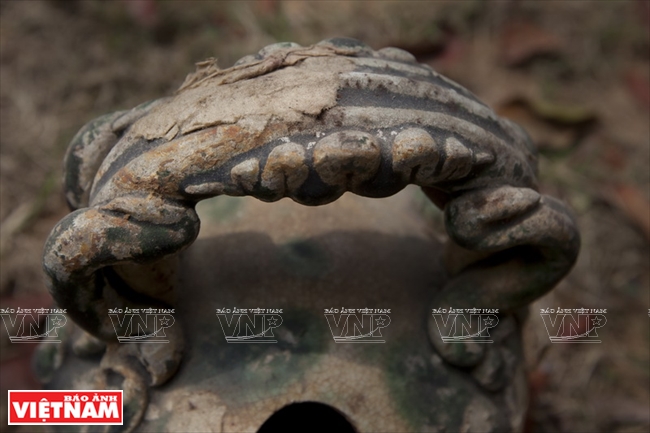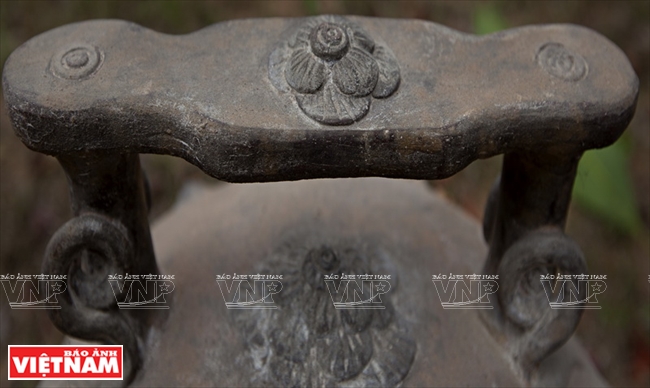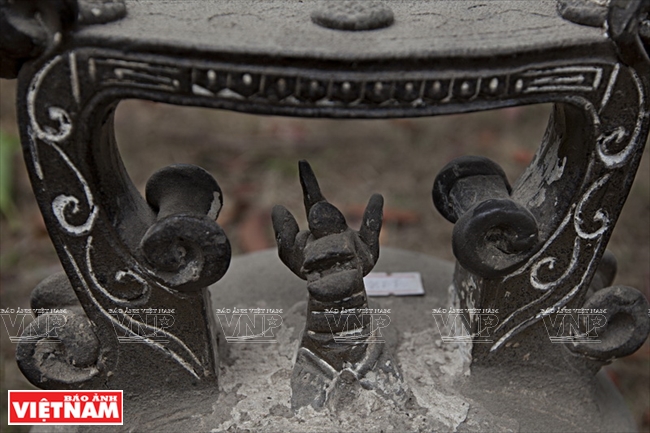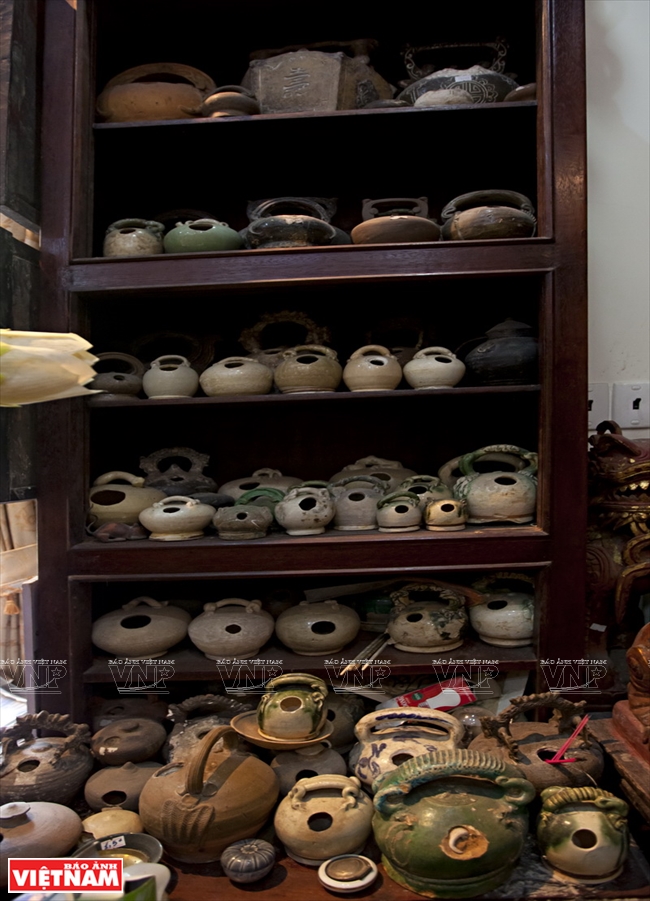Lime-pots are usually made in the spherical form with a small mouth where lime can be taken out by wagtails. Each time when a wagtail is pulled out, the lime is unintentionally or intentionally scraped on lime-pot rims which will get thicker and thicker in the pot’s neck or even sealed off, hence the lime-pots are no longer useable. Lime-pots are often used in daily-life activities and replaced by new ones when the lime inside turns hard or the pots cracks. Old lime-pots are usually placed by the side of secular banyan trees or shrives or temples.
 Lime-pot dated back to the Ly Dynasty (1009-1225). 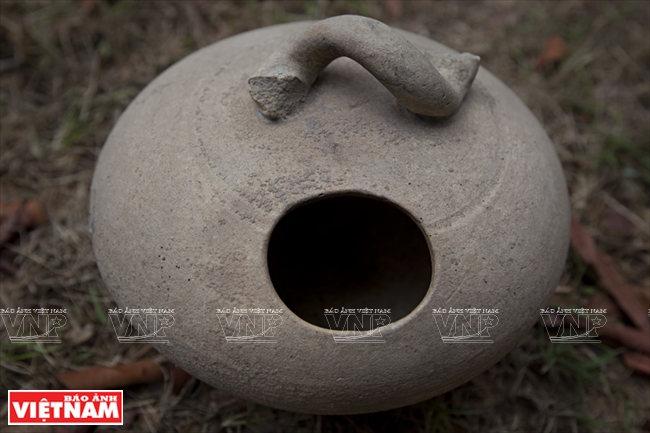 Lime-pot dated back to the early Tran Dynasty (1226- 1400).
|
Lime-pots can be made of different materials such as porcelain in white or green enamel, or bronze, either with or without handles. They are decorated with diverse patterns. Some look like tea pots while others look like vases, depending on the inspirations of lime-pot makers. When referring to “binh voi”, Vietnamese often use the personal pronoun of “Ong” (Sir) like “Ong binh voi” (Sir lime-pot) instead of impersonal pronoun “cai” or “chiec” (thing, it) “chiec binh voi”. Such personification of lime-pots by Vietnamese shows their respect, considering lime-pots their family members. And naturally, “Sir binh voi” occupies an important position in the daily activities of every family.
The image of “Ong binh voi” sometimes reminds people of the lovely images of their grand-mothers and mothers, or of wedding ceremonies when people cluster together, cutting areca nuts, spreading lime on fresh areca nuts and making betel amidst laughter and merry talks or chats. All these constitute the values of an age-old cultural tradition, bearing profound significance in the Vietnamese people’s spiritual life through generations.


